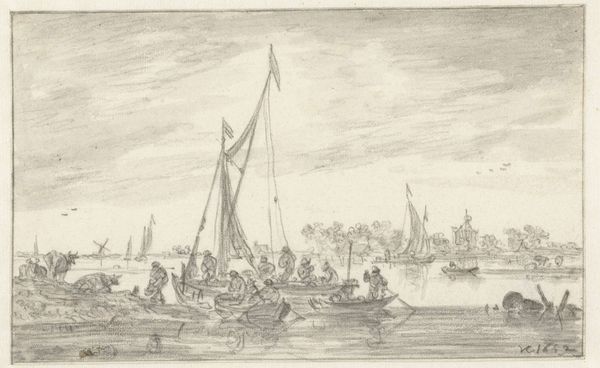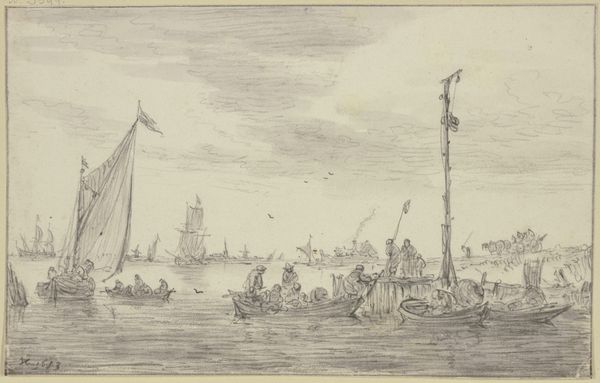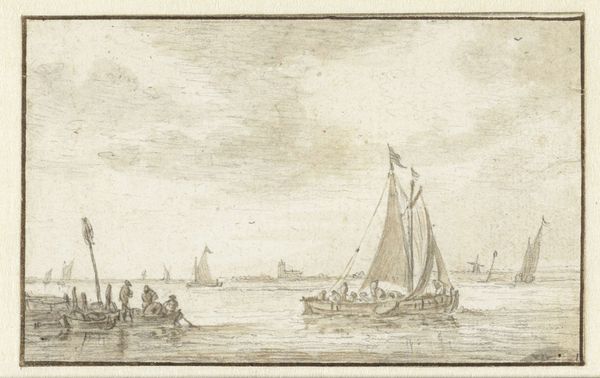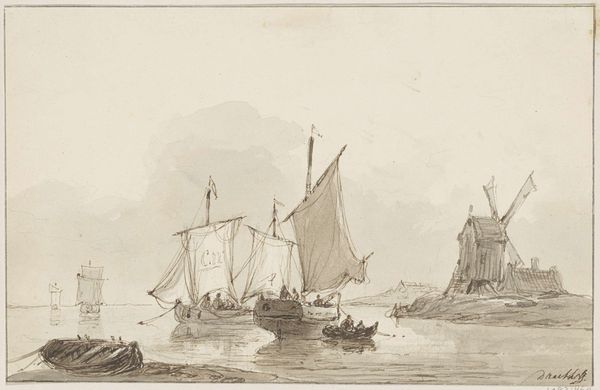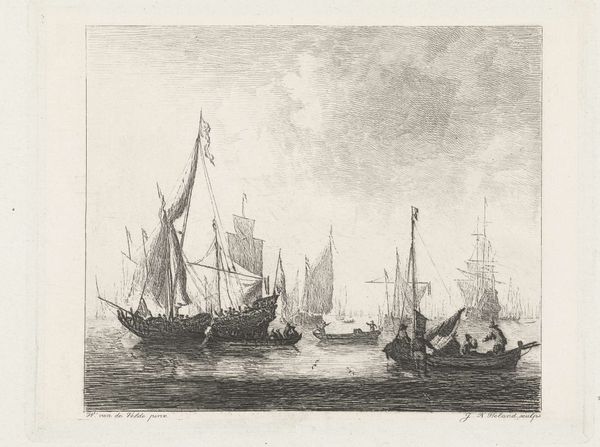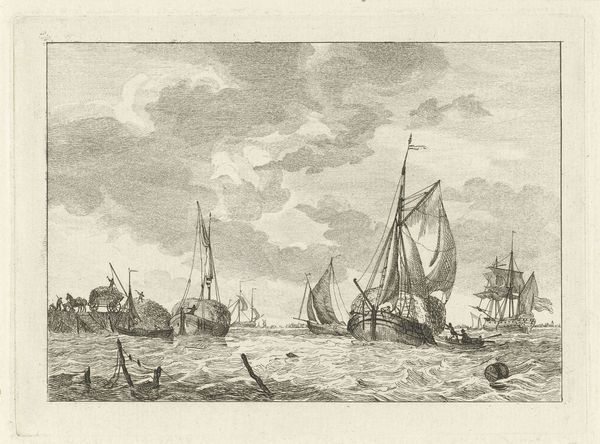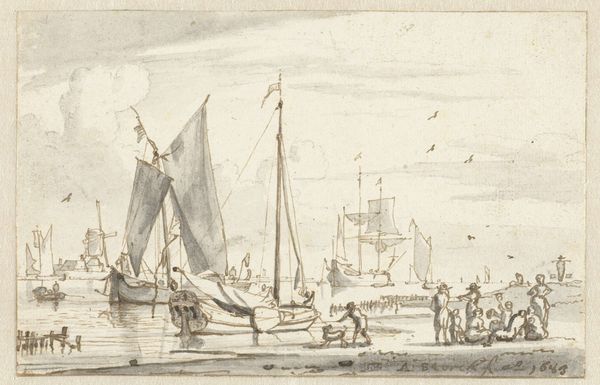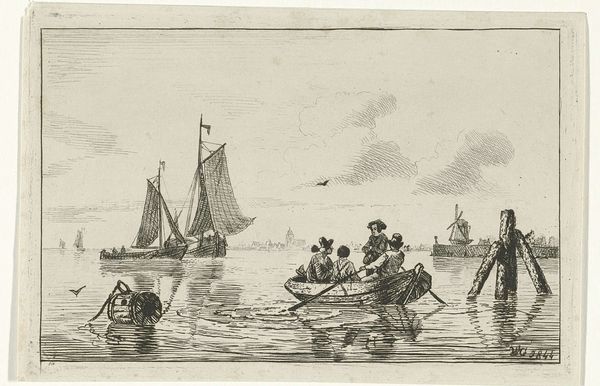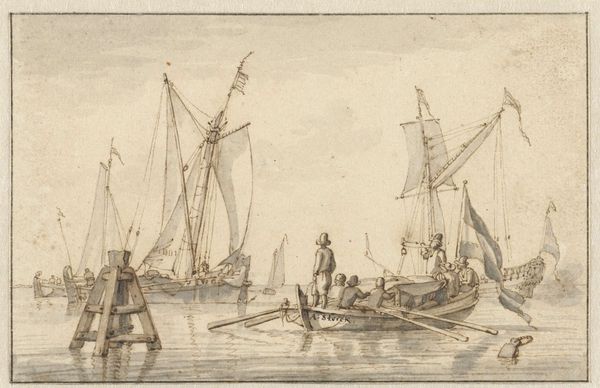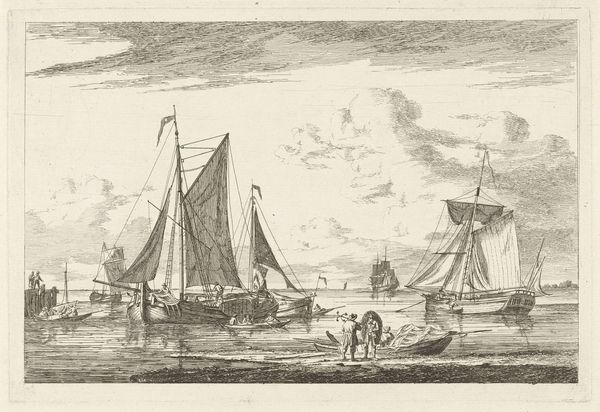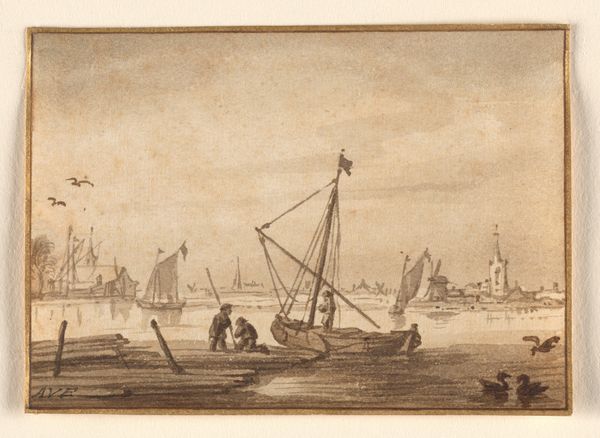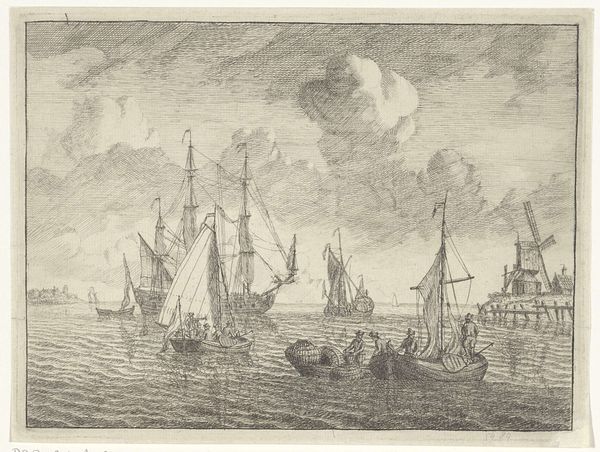
Dimensions: height 174 mm, width 277 mm
Copyright: Rijks Museum: Open Domain
Curator: This etching, entitled "River View with Sailing Ships," attributed to Hendrik Spilman, captures a scene from the Dutch Golden Age, sometime between 1742 and 1784. It's currently housed here at the Rijksmuseum. Editor: Immediately, I'm struck by the sheer industriousness captured in the print. The water is filled with boats and people; even the line work suggests constant movement. The material components -- sails, wood hulls -- stand out because the scene is bustling with commerce and transportation. Curator: Yes, the print encapsulates daily life within that era, and demonstrates how central waterways were to Dutch society. As a print, we need to consider its accessibility. It wasn’t created for a single patron; instead, consider it part of a larger visual culture readily available, impacting ideas, civic understanding and collective memory. Editor: The accessibility of print is a key factor to interpreting this piece, I agree. It wasn’t a unique, precious object; it was, for its time, almost mass-produced, right? Also the details in the clothing, ship designs, all suggest the printmaker focused on everyday authenticity rather than high art allegories. The process of making this piece reflects a growing mercantile class documenting their place in the world. Curator: Precisely. The image, printed in multiple editions, was part of the process through which a national identity was shaped. Think of the viewers; the print medium becomes essential for the image’s historical interpretation and broader social role. It creates an engaging public dialogue about Dutch prosperity, expansion and connection to global trade networks. Editor: Thinking about its creation from a labor perspective, each etching requires a trained hand. Creating the plates, distributing the image...It’s important to consider the full artistic production line and its place within larger, materialist circuits of capital. The landscape itself is part of this economy. Curator: This work beautifully encapsulates how the development and distribution of affordable art amplified both artistic expression and socioeconomic trends across communities in the Dutch Golden Age. Editor: A fantastic piece for revealing labor, trade and collective values of that historical moment, even today.
Comments
No comments
Be the first to comment and join the conversation on the ultimate creative platform.
